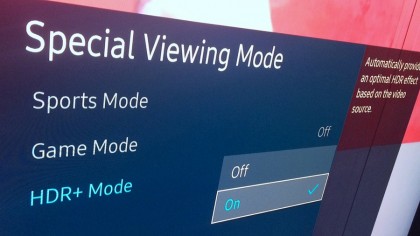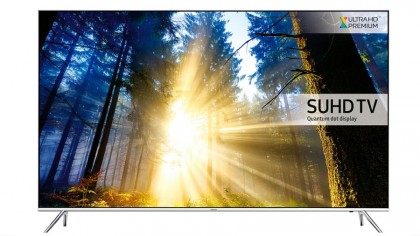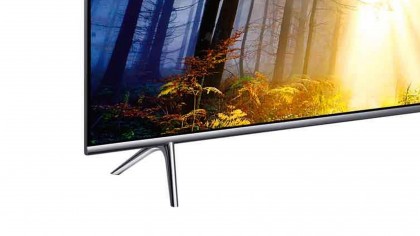Why you can trust TechRadar
Although it has the requisite 3840 x 2160-pixel panel to guarantee Ultra HD 4K images, that's not the primary reason why the UE55KS7000 impresses; it's down to HDR, or specifically HDR10, which is the high dynamic range industry standard that Samsung favours.
Watch native HDR, such as Marco Polo in 4K HDR from Netflix, and the UE55KS7000 purrs. Kept in Movie mode, an 'HDR detected' message flashes up on the screen (a nice touch), which also indicates that the UE55KS7000 has automatically tweaked the picture parameters to suit – a marvellous idea.
Although the overall image is pinging with luminance, and ever-so-impressive in terms of detail, brightness and colour definition (reds in particular look simply awesome), HDR on the UE55KS7000 brings out subtle nuances in light particularly well. Natural light streaming through a window and lighting-up someone's face is a particular favourite of mine – it just looks so real.

Ditto overcast skies, which lends an eery, real-life look to outdoor shots. Switch to non-HDR versions of the same footage and these kinds of effects become invisible.
Impressive as the UE55KS7000's native HDR mode is, it gets better. In its Special Viewing Mode menu is HDR+, which expands the colour definition by analysing each frame, and using the extra-luminant 10-bit panel to its fullest. Almost everything looks good, and HDR-ish, but especially Blu-ray discs and HD TV channels.
Not that they're perfect; a blast of Euro 2016 football from a live HD TV channel impressed on brightness, colour and detail (Auto Motion Plus is worth toggling on), but I did spot some soft areas, scrubbed of detail, clinging to the players like a halo. Moving objects like these do tend to look a little odd, something that worsens as you go down the video food chain to standard definition, which the UE55KS7000 doesn't upscale all that well.

It's also worth steering well clear of the UE55KS7000's Sports mode, which made a Euro 2016 game an utterly unwatchable bright, luminous green. I'm not sure what's happened here, though Samsung's presets generally do fail to impress, and of the usual Normal, Dynamic and Movie modes only the latter was accurate. Although Movie mode can sometimes be a little dull, on the UE55KS7000's HDR panel it's punchy, yet subtle.
Although the UE55KS7000 is part of Samsung's flagship SUHD range, it's not as powerful as the top-of-the-tree UE65KS9000. The primary reason is the use of edge LED backlighting, which does bring some drawbacks. Chief among these is the slight crushing of blacks during high-contrast sequences, although during my review I was distracted only by some visible light shooting up from the bottom edge of the panel.

It was primarily a problem when I watched from a slight angle rather than head-on, when not only could I see torpedoes of light, but a navy blue tinge to blacks. During a Euro 2016 game the slow but frequent pan of the camera left and right also made the panel's structure pretty obvious – again, only when viewed from an angle. It's a known characteristic of the VA panel inside the UE55KS9500, and the flip-side to its generally impressive performance with black levels.
Since the UE55KS7000's head-on image is so involving in so many ways, it's seems churlish to criticise its angular viewing too much, but big screens like this are inevitably going to be watched from an angle in larger living rooms.
Sound
The audio from Samsung TVs has improved in recent years, and the UE55KS7000 is a step up from 2015's models. However, despite the increased bass, mid and high frequency on its 60W speakers the UE55KS7000 is able to deliver decent audio only for TV. In my tests I watched another Euro 2016 match and was impressed by the clarity of the commentary and the background audio, but a blast of Game of Thrones soundtrack lacked pizazz.
Jamie is a freelance tech, travel and space journalist based in the UK. He’s been writing regularly for Techradar since it was launched in 2008 and also writes regularly for Forbes, The Telegraph, the South China Morning Post, Sky & Telescope and the Sky At Night magazine as well as other Future titles T3, Digital Camera World, All About Space and Space.com. He also edits two of his own websites, TravGear.com and WhenIsTheNextEclipse.com that reflect his obsession with travel gear and solar eclipse travel. He is the author of A Stargazing Program For Beginners (Springer, 2015),

